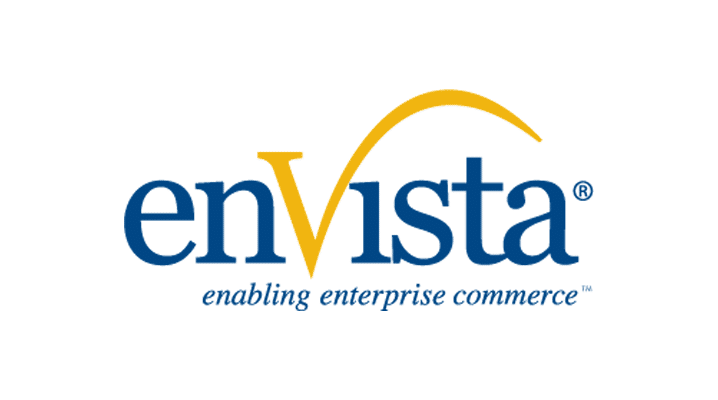enVista announces that Supply & Demand Chain Executive has selected enVista as a recipient of an SDCE Green Supply Chain Award for 2018.
Taming peak season: It’s all about prevention
Reading Time: 5 minutes
For parcel shippers and carriers alike, the holiday season is a grueling stress test. Many retailers ship the majority of their orders in the last two months of the year, ramping up daily volumes and straining carriers’ capacity. Order volumes spike and backlogs develop, causing Aunt Nelly’s sweater or Timmy’s chemistry kit to arrive sometime after Christmas.
By all accounts, the number of late holiday deliveries directly relates to the extraordinary growth of e-commerce orders, most of which move via the parcel carriers FedEx and UPS and the U.S. Postal Service (USPS). Since late 2013, when a sharp spike in e-commerce shipments caught them off-guard, parcel carriers have taken steps to better prepare themselves for holiday traffic. Depending on the carrier, these have included requiring shippers to provide more detailed forecasts; hiring tens of thousands of temporary workers; expanding weekend and evening service; adding more trucks, planes, and warehouse capacity; modifying shipment routing; limiting the number of parcels they accept immediately before Christmas; and levying peak-season surcharges to help cover those additional costs.
Still, e-commerce parcel volumes continue to exceed forecasts, and evidence suggests that carriers are still struggling to keep up. Sixty-one percent of consumers polled for shipping technology specialist Pitney Bowes’ 2018 Global eCommerce Study said they were frustrated last year by some element of holiday shopping, such as late deliveries, inaccurate tracking, and high shipping costs. Significantly, that’s up from 47 percent in the previous year, says Lila Snyder, Pitney Bowes’ executive vice president and president, commerce services. And 80 percent of respondents surveyed for parcel spend management specialist Green Mountain Technology’s 2018 Annual Benchmarking Report on parcel transportation said on-time performance was their key concern during the 2017-2018 peak shipping season.
Late deliveries are partly due to the conflict of carriers’, consumers’, and shippers’ interests, according to Joe Wilkinson, senior director of consulting for enVista, a global consulting and software solutions firm. The main factor is consumer behavior—late orders that flood the system at the 11th hour. Shippers that encourage or enable last-minute orders and those that provide carriers with inaccurate forecasts bear some responsibility too. Carriers, meanwhile, can’t build networks to accommodate holiday peaks, which can be three or four times their normal volumes, and operate them all year round, he says.
Other factors that contribute to late deliveries include insufficient labor—hard to avoid with today’s low unemployment rate—and winter storms that can delay not just last-mile deliveries, but also the cross-country truckload or intermodal linehaul portion of a parcel’s journey, Snyder notes.
It’s unlikely, therefore, that late deliveries can be completely eliminated. But there are some steps shippers can take to reduce the risk of holiday-season snafus. They include the following:
Hone your forecasts. It’s hard for shippers to predict what the customer will buy, says Katie Parker, director of strategic solutions at Green Mountain Technology, yet it’s more important to get forecasts right in peak season than at any other time of year. “When parcel shippers underestimate the volume and timing of their shipments, it affects carriers’ ability to plan and manage their peak-season operations,” she points out.
To avoid “underpredicting,” some shippers give carriers forecast ranges. It’s best, though, to continue to adjust forecasts and ensure they’re as accurate as they can make them, right up until a few days before Christmas, Wilkinson advises.
Manage customers’ expectations. Increasingly, consumers expect to be able to place orders a few days before Christmas and still get guaranteed delivery before the holiday. But the more packages that enter the system as the clock winds down, the harder it is for carriers to meet those expectations. That’s why the major carriers stipulate that certain rules and service guarantees do not apply during peak season.
One way shippers can reduce volume in those final days is to work with their carriers to set earlier cutoff dates. Merchants may be reluctant to do that, though. If 40 percent or more of a company’s annual sales are holiday-related, Snyder says, “every day matters, so retailers will want to push as close to that edge as they can.”
Another option is to offer incentives like discounts to encourage customers to order earlier in the season. Spreading orders over a longer period helps both shippers and carriers allocate their resources so as to avoid bottlenecks in their operations, Parker says. And if a package is delayed, the shipper and carrier will have more time to fix the problem before the holiday deadline.
Ship differently. For some shippers, it may be worthwhile to up their holiday delivery game, even if it costs more. One that has adopted this approach is the book publisher Penguin Random House (PRH), which mostly sells to distributors, independent booksellers, and specialty retailers. PRH ships about 400 million books a year, via a combination of truckload, less-than-truckload (LTL), and parcel service, according to Annette Danek-Akey, senior vice president of fulfillment. UPS is the publisher’s main parcel carrier.
As the holiday season approaches, PRH implements its “2-Day Rapid Replenishment” program for independent bookstores. Beginning Oct. 1, bookstores that place their orders by 3 p.m. will receive them within two business days. The two-day transit program, now in its eighth year, is standard throughout the season. “We recognize the importance of bookstores’ receiving product to support their holiday-season sales, so we’re willing to increase our transportation cost to make sure they get their orders in two days,” Danek-Akey says. That short-term increase produces long-term benefits for PRH: The program has been instrumental in generating “great sales” from independent bookstores, she notes.
Filling a truckload and dropping those packages into national and/or regional parcel carriers’ networks across the country can help to lighten the load on local infrastructure, Wilkinson says. Good communication helps to speed the parcels to their destination. Penguin Random House, for example, uploads package-level detail to UPS as it finishes loading a trailer. This expedites processing at the sortation center because the parcel carrier can decide how to handle the packages before the truck arrives.
Another way to reduce the burden on carriers’ networks is to deliver some consumer orders via LTL service to stores and then use ship-from-store and pick-up-in-store strategies. This adds to a seasonal increase in store labor costs, but it also reduces miles, “touches,” per-piece transportation costs, and in some cases, days in transit. Positioning inventory closer to customers—for example, in regional distribution centers—provides more flexibility while reducing transit times.
Diversify your carriers. Spreading parcel volume across multiple carriers can help to assure capacity at busy times. Green Mountain Technology’s benchmark report found that more shippers are doing just that by shifting to regional carriers, which have a smaller geographic footprint but usually offer faster transit times and experience fewer bottlenecks, Parker says.
Wilkinson agrees that diversifying carriers can be a smart way to increase flexibility but cautions against approaching regional carriers only when the going gets tough. Capacity is very tight for them, too, during the peak season, and they will have to give priority to their existing customers. Having a year-round business relationship allows for advance planning and makes it more likely that your holiday shipments can be accommodated.
Communicate early and often. If there’s anything e-commerce has proven, it’s that consumer preferences and demand can change quickly. That’s why regular proactive communication throughout peak season is important. Pitney Bowes, which helps many merchants with labeling and tracking of parcels, routinely sees consumers tracking their packages nine or 10 times during a delivery period. This shows “how hungry they are for more information than they typically get,” Snyder says.
enVista’s Unique Expertise Across Supply Chain and Microsoft Platform Delivers Continued Growth
enVista announces today that its Microsoft Business Solutions Practice has achieved 35 percent revenue growth, year over year.
enVista Listed as a Distributed Order Management Vendor in Gartner, Inc’s Digital Commerce Vendor Guide, 2018
enVista announces inclusion in “Digital Commerce Vendor Guide” published by Gartner, Inc., a leading information technology research company.
Carmel-based enVista helps retailers navigate e-commerce
Reading Time: 2 minutes
The rise of e-commerce, technology and big data has brought big changes to the retail industry—and big opportunities for Carmel-based software and consulting company enVista LLC.
The privately held enVista, founded in 2002 by Jim Barnes and John Stitz, started as a two-person operation with first-year revenue of $1.4 million. Through organic growth, enVista now has some 535 employees at offices around the world, more than 1,000 customers, and projected 2018 revenue of $97 million.
Over the past 15 years, the company has seen average annual revenue growth of 22 percent and has landed on IBJ’s 25 fastest-growing companies list in both 2015 and 2018.
And enVista sees plenty more growth potential.
“It’s been a pretty crazy ride,” said CEO Barnes.
EnVista serves customers across multiple industries, including distribution, logistics, manufacturing and food/beverage. But about half of its revenue comes from retail alone, and in 2015 enVista launched what it calls its Unified Commerce Platform—software that allows retailers to manage their in-store point-of-sale systems, e-commerce, inventory and customer information from a single platform.
“We really uncovered needs in the area of unified commerce, and really helping companies put their e-commerce strategy together and how they go to market with it,” said Stitz, enVista’s managing partner.
The company’s typical retail client has annual sales of $500 million to $2 billion, and enVista’s client list is diverse, including Evansville-based Shoe Carnival, menswear retailer Brooks Brothers, novelty-store chain Spencer Gifts, outdoor-gear retailer Cabela’s, and both Petco and PetSmart.
In the early days of e-commerce, retailers typically ran their online and brick-and-mortar divisions separately. That meant, for instance, that a retailer’s online and in-store merchandise selections might be quite different, and customer data collected via the retailer’s website might not be available to store employees.
But now, the trend is what the industry calls omnichannel retail—integrating operations and serving the customer seamlessly both in-store and online.
That can be tricky to manage, retail experts say.
“Now, you’ve come in with this online presence. That’s a whole different level of expertise that you’ve got to bring into the picture,” said Daniel McQuiston, an associate professor of marketing at Butler University. “It’s a tough thing to do.”
Mara Devitt, a senior partner at Chicago-based retail consulting firm McMillanDoolittle, said traditional retailers must do “a lot of heavy lifting” to succeed in this area.
“Retailers, to respond, have to develop different capabilities within their organizations,” Devitt said. “There’s all these real details that have to be worked out.”
Large retailers, Stitz said, are generally further along the path of omnichannel retail because they have more resources to tackle the issue. And retailers that originated online, like Amazon, don’t have the challenge of juggling a large network of physical stores.
enVista Named Triple Crown Winner for Excellence in Managed IT Services and Enterprise Technology Expertise
enVista announces that CRN®, a brand of The Channel Company, has recognized enVista for earning it’s 2018 Triple Crown Award.




